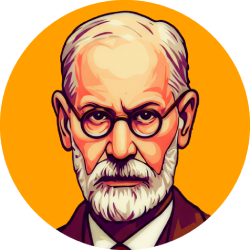Psychoanalysis is a fascinating theme that has caught the attention of many people over the years. As a psychoanalyst, I have had the opportunity to work with patients of different ages and contexts, and I can say that psychoanalysis is a powerful tool to better understand ourselves and others. In this article, we will explore what psychoanalysis is, why it has come and how it can be applied to our daily lives.
Introduction to Psychoanalysis
THEpsychoanalysisIt is a theory and practice developed by the Austrian doctor Sigmund Freud in the late nineteenth century. It is based on the idea that our thoughts, feelings and behaviors are influenced by unconscious factors, that is, things that we are not aware consciously. Psychoanalysis seeks to help people better understand these factors and deal with them in a healthy way.
A simple example is when someone has an irrational fear of something, such as spiders or height. Psychoanalysis can help this person understand why this fear exists and how to overcome it. This can be done through therapy, where the patient talks about his thoughts and feelings with a trained therapist.
The origin of psychoanalysis
Psychoanalysis emerged as a response to the limitations of traditional medicine in treating mental illnesses. In the late nineteenth century, medicine was focused on finding physical causes for disease, and many doctors were not prepared to deal with mental health problems. Freud, who was a neurologist, began to develop his theories about the human mind and how it influences our behavior.
He was influenced by philosophers such as Friedrich Nietzsche and Arthur Schopenhauer, who wrote about human nature and the importance of emotion and unconscious. Psychoanalysis was also influenced by Charles Darwin’s theory of evolution, which showed how humans are influenced by biological and environmental factors.
Basic principles of psychoanalysis
Psychoanalysis is based on some basic principles. The first is the idea that the unconscious plays an important role in our behavior. This means that our thoughts, feelings and actions are influenced by factors that we are not aware consciously.
Another important principle is the notion of repression. This occurs when our minds “hide” memories or desires that are considered unacceptable or dangerous. Psychoanalysis seeks to help people understand and deal with these repressions in a healthy way.
In addition, psychoanalysis also emphasizes the importance of childhood and emotional development. Our child experiences can have a profound impact on our adult behavior, and psychoanalysis can help people better understand how these experiences influence our lives.
Application of psychoanalysis in everyday life
Psychoanalysis is not just a theory or practice for treating mental illness. It can also be applied to our daily lives to improve our relationships, make more informed decisions and deal with stress and anxiety.
For example, psychoanalysis can help us better understand why we have certain habits or behaviors. If someone has a procrastination habit, psychoanalysis can help understand the underlying reasons for this behavior and develop strategies to overcome it.
In addition, psychoanalysis can also be used in organizational contexts such as companies and schools. It can help improve communication between team members, resolve conflict and increase productivity.
In short, psychoanalysis is a powerful tool for better understanding ourselves and others. It can be applied in different contexts, from the treatment of mental illness to the improvement of our relationships and performance at work.
As a psychoanalyst, I can say that psychoanalysis is a fascinating journey that can lead to greater self-awareness and well-being. If you are interested in learning more about psychoanalysis or how it can be applied in your life, I hope this article was a good starting point.


